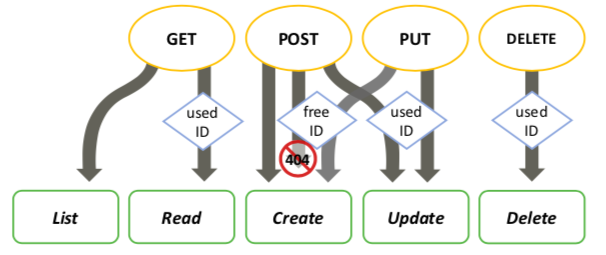Process Overview¶
This section attempts to explain how Tripal-BrAPI handles calls.
How BrAPI calls are handled¶
Example: ``https://www.crop-diversity.org/mgis/brapi/v1/germplasm/01BEL084609`` where https://www.crop-diversity.org/mgis is the Drupal site root.
- Drupal hook_menu called
brapi_menu()(inbrapi.module) to resolve URL handling.brapi_menu()provides to Drupal supported BrAPI calls as they are defined inbrapi_get_calls()(inapi/brapi.const.inc).
Here, the system will select the call defined by the germplasm/{GermplasmDbId} key of the array returned by brapi_get_calls():

Note
Any call setting defined by brapi_get_calls() can be overridden by external module using the hook hook_brapi_calls_alter(&$brapi_calls), $brapi_calls being the array returned by brapi_get_calls(). Call versions are selected on the BrAPI setting administration interface.
- For every BrAPI call, Drupal will call
brapi_call_wrapper()(inapi/brapi.calls.inc) that will then call the function specified bybrapi_get_calls()at thecallback versionskey.brapi_call_wrapper()will check permissions and select the appropriate call version.
Here, we assume current user has BRAPI_USE_PERMISSION and used GET HTTP method: brapi_v1_germplasm_json() (in api/brapi.calls.inc) function will be called.
3. Then brapi_call_wrapper() will allow external modules to override returned data before being served to the client if they implement hook_brapi_CALL_FUNC_NAME_alter(&$data, &$context).
Here, any implementation of hook_brapi_germplasm_germplasmDbId_alter(&$data, &$context) will be called. Note, it is also possible to alter call result in case of errors.
- Finally,
brapi_json_prepare()andbrapi_json_output()(inapi/brapi.api.inc) will be called to format data into a JSON string that will be served by Drupal to the client.
How brapi_v1_germplasm_json() works¶
brapi_call_wrapper()callsbrapi_v1_germplasm_json()(inapi/brapi.calls.inc). As the “germplasm” call deals with a germplasm “resource” (as defined in RESTFull architecture, or “object”, or “entity”, or whatever you want to call it), it will callbrapi_process_crud()(inapi/brapi.api.inc). CRUD stands for Create-Read-Update-Delete and is part of the RESTFull architecture.brapi_process_crud()will decide, according to the context (HTTP method used, identifier provided), which action should be done:

brapi_process_crud() will load the corresponding resource in case of a used ID provided and will then call the function corresponding to the action to perform. Action functions are provided by the $action parameter:
$actions = array(
'create' => 'brapi_v1_create_germplasm_json',
'read' => 'brapi_v1_read_germplasm_json',
'update' => 'brapi_v1_update_germplasm_json',
'delete' => 'brapi_v1_delete_germplasm_json',
'list' => 'brapi_v1_germplasm_search_json',
);
Here, brapi_v1_read_germplasm_json() (in api/brapi.calls.inc) will be called with a “germplasm” resource of ID 01BEL084609 loaded (using chado_generate_var()) as argument.
brapi_v1_read_germplasm_json()(inapi/brapi.calls.inc) will prepare and return the data structure that will be converted later into JSON:
function brapi_v1_read_germplasm_json($stock) {
// It initializes the metadata part of the BrAPI call answer.
// Here we only have 1 element, so we set the pager to 1 element.
$metadata = brapi_prepare_metadata(1);
// This can be used to output debugging information into the call.
$debug_data = array();
// See step 4 below.
$germplasm_data = brapi_get_germplasm_details($stock);
// It initializes the data part of the BrAPI call answer.
$data = array('result' => $germplasm_data);
// See step 5 below.
brapi_aggregate_call($data, $metadata, $debug_data);
// return the results.
return array(
$data,
$metadata,
$debug_data,
);
}
brapi_get_germplasm_details()(inapi/brapi.calls.inc) is called to generate and fill the structure of a germplasm as defined in the BrAPI specifications. This function is also used when listing germplasm (“germplasm” call without ID) and by the “germplasm-search” call.- Then
brapi_aggregate_call()(inapi/brapi.api.inc) will check if current BrAPI settings require to also call this BrAPI call on external servers and if so, calls will be made and data will be aggregated (ie. Fields with “null” value returned bybrapi_v1_germplasm_json()will be filled when a non-null values are provided by external calls for those fields).